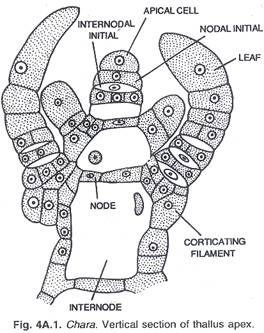In this article we will discuss about the structure of plasma membrane in bacterial cell. This will also help you to draw the structure and diagram of plasma membrane.
Structure of Plasma Membrane:
The plasma membrane is approximately 7.5 nm (0.0075 µm) thick, forms the limiting boundary of the cell and is made up of phospholipids (about 20-30%) and proteins (about 60-70%).
Several models have been proposed to explain the ultra-structure of the plasma membrane; the most widely accepted one is ‘FLUID MOSAIC MODEL’ introduced by Singer and Nicolson (1974). According to this model (Fig. 5.15) the membrane is a bi-layer of phospholipids and the two opposing layers of phospholipids overlap slightly; each phospholipid molecule consisting of a phosphate group and a lipid.
Each phospholipid is structurally asymmetric with polar and non-polar ends (Fig. 5.16) and is called amphipathic. The polar ends interact with water and are hydrophilic; the non-polar ends do not interact with water (i.e. insoluble in water) and are hydrophobic. The hydrophilic ends occur towards the outer surface of the membrane whereas the hydrophobic ends are hurried in the interior away from the surrounding water.
The bi-layer phospholipid is interrupted by proteins which are distributed in a mosaic-like pattern. Some of the proteins are confined to the outer surface of bilipid layer (extrinsic or peripheral proteins) and others are partially or totally buried within it (intrinsic or integral proteins). The integral proteins, like membrane lipids, are amphipathic.
Their hydrophobic regions are burried in the lipid while the hydrophilic regions project out from the plasma membrane surface. Often carbohydrates are attached to the outer surface of plasma membrane proteins and seem to perform important functions. Both proteins and lipids move within the phospholipid matrix of the membrane.
However, many bacterial plasma membranes do contain pentacyclic sterol-like molecules called hopanoids (Fig. 5.17) which are synthesized from the same precursors as steroids. Like steroids in eukaryotic cells, hopanoids are thought to provide stability to bacterial plasma membrane.


